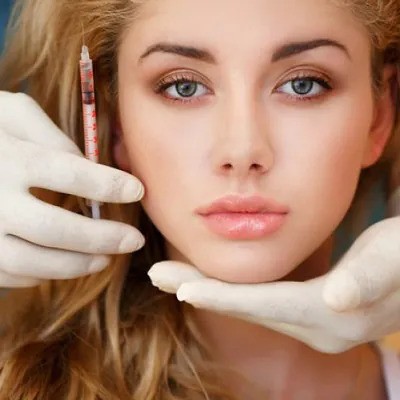
Botox in Islamabad, short for botulinum toxin, is a powerful neurotoxin derived from the bacterium Clostridium botulinum. Though the term “toxin” may sound alarming, Botox has been safely used for decades in both medical and cosmetic treatments. It is widely recognized for its ability to reduce the appearance of wrinkles and fine lines, making it a popular non-surgical solution for facial rejuvenation.
The Science Behind Botox
Botox works by temporarily blocking nerve signals to specific muscles, preventing them from contracting. This relaxation of the muscles leads to a smoother skin surface, which helps reduce the visibility of dynamic wrinkles—those formed by repeated facial movements like smiling, frowning, or squinting. Over time, untreated muscles continue to contract and form lines, but Botox can delay this process by limiting excessive muscle activity.
Medical and Cosmetic Uses of Botox
While Botox is commonly associated with cosmetic enhancements, it has a broad range of medical applications. Some of the key uses of Botox include:
Cosmetic Applications:
- Forehead Lines: Botox helps smooth horizontal forehead wrinkles caused by repetitive facial expressions.
- Crow’s Feet: It reduces the fine lines that appear at the outer corners of the eyes due to smiling or squinting.
- Frown Lines (Glabellar Lines): These vertical lines between the eyebrows are softened with Botox injections.
- Bunny Lines: Wrinkles on the sides of the nose that appear when you scrunch your face can be minimized.
- Lip Lines and Gummy Smile: Botox can enhance the appearance of the lips by reducing lines and preventing excessive gum exposure when smiling.
- Jawline Slimming: Botox can be used to relax the masseter muscles, leading to a more contoured jawline.
- Neck Bands: It helps smooth out prominent vertical neck bands caused by muscle activity.
Medical Applications:
- Chronic Migraines: Botox injections can help reduce the frequency and severity of migraines by relaxing muscles and blocking pain signals.
- Hyperhidrosis (Excessive Sweating): Botox prevents overactive sweat glands from producing excessive moisture in areas like the armpits, palms, and soles.
- Muscle Spasms and Dystonia: Botox is used to manage involuntary muscle contractions in conditions like cervical dystonia and spasticity.
- TMJ Disorders: It can relieve pain and tension in the jaw caused by temporomandibular joint disorders.
- Strabismus (Crossed Eyes): Botox has been used to treat eye muscle imbalances effectively.
- Overactive Bladder: Botox injections help reduce bladder muscle contractions, minimizing urinary incontinence.
How Botox Treatment Works
The Botox procedure is quick and minimally invasive, typically taking about 10-15 minutes. The process involves the following steps:
- Consultation: A qualified professional assesses your concerns and determines if Botox is suitable for you.
- Preparation: The targeted area is cleaned, and a topical anesthetic may be applied to minimize discomfort.
- Injection: Using a fine needle, the provider injects small amounts of Botox into specific muscles.
- Post-Treatment Care: Patients are advised to avoid rubbing the treated area, strenuous exercise, and excessive sun exposure for at least 24 hours.
How Soon Can You See Results?
Botox results are not immediate. Typically, changes begin to appear within three to five days, with full effects visible after 10 to 14 days. The results last approximately three to six months, depending on factors such as metabolism, muscle strength, and dosage.
Is Botox Safe?
When administered by a trained professional, Botox is considered safe with minimal risks. Common side effects include slight redness, swelling, and bruising at the injection site. Rare complications, such as drooping eyelids or asymmetry, may occur but are usually temporary.
Myths and Misconceptions About Botox
There are many misconceptions surrounding Botox, leading to confusion among potential patients. Let’s debunk some of the most common myths:
- Myth #1: Botox Freezes Your Face – When performed correctly, Botox softens expressions without eliminating natural movement.
- Myth #2: Botox is Only for Older People – Preventative Botox can be used in younger adults to slow down wrinkle formation.
- Myth #3: Botox is Toxic and Unsafe – Botox is FDA-approved and has been extensively studied for both medical and cosmetic applications.
- Myth #4: Stopping Botox Makes Wrinkles Worse – Your wrinkles will gradually return to their previous state but will not worsen after discontinuing Botox.
Who is a Good Candidate for Botox?
Botox is ideal for individuals looking to reduce fine lines, prevent deep wrinkles, or address medical conditions. A good candidate:
- Is in overall good health
- Has realistic expectations
- Wants a non-invasive solution for wrinkles or muscle-related issues
- Does not have any neurological disorders or allergies to Botox ingredients
Alternatives to Botox
If Botox isn’t suitable for you, other options exist to achieve similar results:
- Dermal Fillers: Hyaluronic acid fillers plump and smooth skin.
- Chemical Peels: Exfoliates the skin to reduce fine lines.
- Microneedling: Stimulates collagen production for a youthful appearance.
- Laser Therapy: Targets wrinkles and improves skin texture.
- Skincare Routine: Retinoids, antioxidants, and sunscreen can help maintain skin health.
Conclusion
Botox is a widely used and effective treatment for both cosmetic and medical purposes. It works by temporarily relaxing targeted muscles, reducing wrinkles, and addressing various health conditions. While results take a few days to appear, Botox provides a safe, non-invasive way to enhance your appearance and well-being.